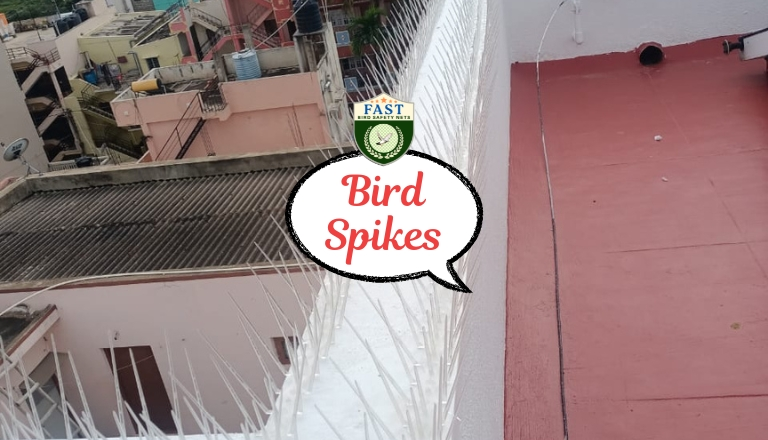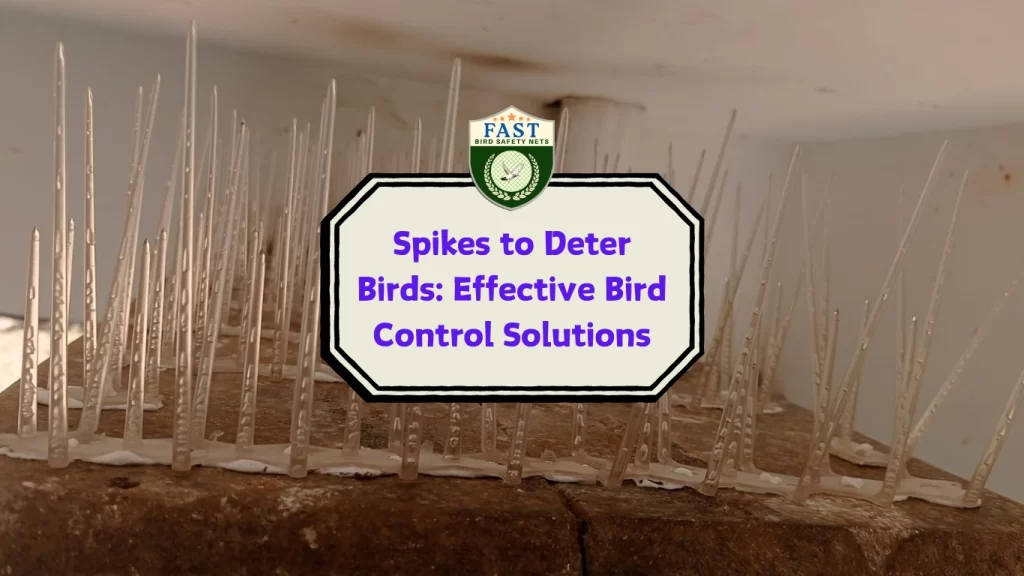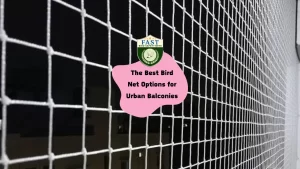Birds can be a delightful presence, but when they become a nuisance by roosting or nesting in unwanted areas, they can create problems. Spikes are an effective and humane way to deter birds from landing or perching on ledges, rooftops, and other surfaces. Here’s a comprehensive guide on using spikes for bird control.
1. Understanding the Need for Bird Control
Bird control is essential for various reasons:
- Health Hazards: Bird droppings can carry diseases and parasites that pose risks to human health.
- Property Damage: Birds can cause damage to buildings, vehicles, and outdoor equipment with their nesting and droppings.
- Nuisance: Constant bird presence can be noisy, messy, and disruptive, particularly in urban areas.
- Safety Concerns: Birds nesting near machinery or aircraft can pose safety risks.

2. How Spikes Work
Spikes create an unwelcoming surface for birds to land or perch on:
- Physical Barrier: Spikes prevent birds from finding a comfortable roosting or nesting spot.
- Humane: Spikes do not harm birds but simply discourage them from settling in the area.
- Versatility: Spikes can be installed on various surfaces, including ledges, roofs, signs, and poles.
3. Types of Bird Spikes
Different types of bird spikes are available to suit various applications:
- Plastic Spikes: Lightweight and flexible, suitable for curved surfaces and temporary installations.
- Stainless Steel Spikes: Durable and weather-resistant, ideal for long-term use in outdoor environments.
- Narrow vs. Wide Spikes: Choose the appropriate spike width based on the size of the birds you want to deter.
4. Selecting the Right Spikes
Consider the following factors when choosing bird spikes:
- Bird Species: Determine the type and size of birds causing the problem to select spikes that will effectively deter them.
- Installation Surface: Choose spikes suitable for the material and configuration of the surface where they will be installed.
- Aesthetic Considerations: Opt for spikes that blend with the surroundings and are aesthetically pleasing.
5. Preparing for Installation
Proper preparation ensures successful spike installation:
- Clean Surfaces: Remove any debris, bird droppings, or nesting materials from the installation area.
- Safety Gear: Wear gloves and safety goggles when handling spikes to prevent injuries.
6. Installing Bird Spikes
Follow these steps for a successful spike installation:
- Measure and Mark: Determine the placement of the spikes and mark the installation points.
- Adhesive or Screws: Depending on the surface, use adhesive or screws to secure the spikes in place.
- Overlap Spikes: Ensure the spikes overlap slightly to create a continuous barrier.
7. Monitoring and Maintenance
Regular monitoring and maintenance are essential for spike effectiveness:
- Check for Damage: Inspect the spikes regularly for any signs of damage, corrosion, or displacement.
- Clean Spikes: Remove debris, bird feathers, and droppings from the spikes to maintain their deterrent effect.
- Repair as Needed: Replace damaged spikes or reapply adhesive as necessary to keep the deterrent barrier intact.
8. Benefits of Using Spikes for Bird Control
Spikes offer several advantages for bird control:
- Humane Solution: Spikes deter birds without causing harm or injury.
- Long-lasting: High-quality spikes can provide effective bird control for years.
- Versatility: Spikes can be installed on various surfaces and configurations.
- Cost-effective: Compared to other bird control methods, spikes offer a cost-effective solution over the long term.
Conclusion
Spikes are an effective and humane solution for bird control, preventing birds from roosting or nesting in unwanted areas. By understanding how spikes work, selecting the right type of spikes for your specific needs, and following proper installation and maintenance procedures, you can effectively deter birds and protect your property from damage and nuisance.






